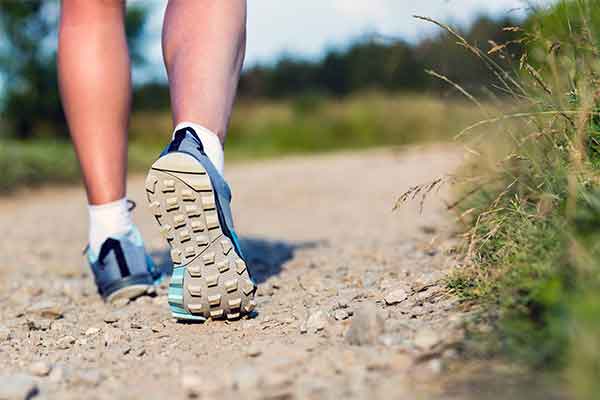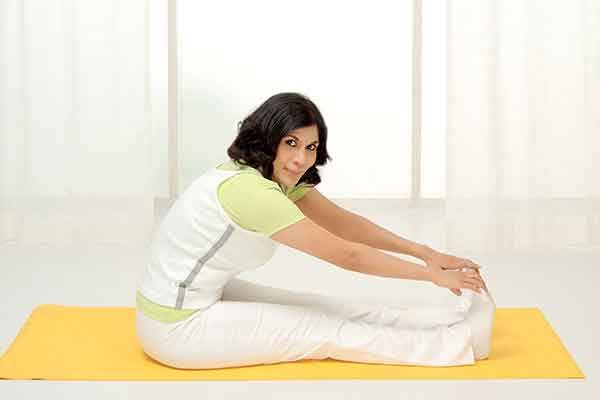The Route to Good Health

Being healthy is not just a matter of not being ill. It is about getting the most out of life. Fitness as a definition has undergone tremendous changes over the past two decades. Initially, it had a narrow outlook encompassing cardio-respiratory endurance, muscular strength and flexibility, but has broadened to include body composition, an active and fit body and a positive state of mind.
DEFINE YOUR GOALS
Knowing what you want to achieve is essential if you want to plan a program for a healthier, fitter lifestyle. For example, your goals could be:
- Losing weight
- Getting fit
- Eating a balanced diet
- Improving your game of tennis/squash/badminton
- Climbing stairs without getting out of breath
- Being able to de-stress
- Increasing energy levels
- Cutting down on cigarettes and alcohol
Whatever your goals are, set yourself realistic targets and be determinedto achieve them.
WHAT IS FITNESS
Physical fitness is often defined as the condition resulting from a lifestyle that leads to the development of an optimal level of cardiovascular endurance, muscular strength and flexibility as well as the achievement and maintenance of ideal body weight.
Lifestyle factors, in fact, contribute significantly to more than half of the annual deaths in the United States. Common aberrations in a healthy lifestyle include smoking, lack of physical activity, stress and a diet rich in fats. All these lead to ailments such as cancer, obesity, coronary artery disease and hypertension, which may cause either morbidity in the individual or even mortality.
BENEFITS OF AN ACTIVE LIFESTYLE
Physical activity improves the functioning of the heart, lowers blood pressure, cholesterol and triglycerides, helps control diabetes and provides an outlet for negative emotions such as anger, frustration and irritability, thus promoting restful sleep.
OBESITY
APPLE VERSUS PEAR-SHAPED BODIES
Body fat is stored in different regions of the body, and the pattern of its distribution can alter the health risks of obesity. For example, excess abdominal fat or apple-shaped (android) obesity is associated with increased risk of heart disease, whereas weight gain in the hips and thighs or pear-shaped (gynoid) obesity does not have the same magnitude of risk.
THE GENETIC FACTOR
Usually, due to genetic reasons men are prone to storing fat in the abdominal region and women in the hips and thighs. Also, an increase in certain enzymatic activity, for example, lipoprotein lipase, causes some individuals to store more fat in certain areas.
DIET PLUS EXERCISE
Diet plus exercise is the ideal way to lose weight. A sound weight-loss program should include:
- Decreased fat consumption
- Portion control
- Palatable food choices
- High fibre
- Adequate nutrition
- An active lifestyle
- Consistent, sensible eating and exercise habits
Nutrition is very important and a healthy well balanced diet should include carbohydrates, proteins, fats and plenty of water. Carbohydrates (grains, vegetables, legumes) must make up 55%-60% of our diet, proteins (milk, eggs, meat, fish, sprouts) 15% and fats (oils, butter) 25%-30%. Fat is essential as it helps in the absorption of fat soluble vitamins like vitamins A, D, E and K. Proteins are essential in repairing tissues and carbohydrates serve as fuel for energy. Fat also serves as a fuel source.
EXERCISE KEEPS THE BODY IN TOP GEAR
Stress, exhaustion and inactivity make us feel tired. Feeling persistently fatigued can place physical and mental strain on the body. This eventually slows the body down and can result in a weakened immune system, disturbed sleep and weight gain.
On the other hand, regular exercise helps eliminate excess fat, create a lean body and boost energy levels. The better the condition we are in and the more the protection we give our muscles and joints, the better our quality of life!
MAKE EXERCISE A PART OF YOUR DAILY LIFE
To keep our bodies fit, tuned and functioning efficiently, we have to make a determined effort to be active.
SELECTING AN EXERCISE
The key to staying consistent with exercise is to select an exercise program that is enjoyable – one that fits in with our personality, lifestyle and fitness goals.
FORMS OF EXERCISE
CARDIOVASCULAR EXERCISE
Cardiovascular exercise burns calories, promotes blood circulation and strengthens the heart. A low-impact routine that places minimum stress on the joints is safe and effective. Good choices include walking, swimming and cycling.
STRENGTH TRAINING
Weight bearing exercise plays an important role in maintaining bone density and keeping the body strong. An effective routine would include exercises that target the major muscle groups of the upper, mid and lower body.
Good choices include weight bearing exercises like push-ups, sit-ups or working out on machines or exercising using dumbbells or resistance bands.
FLEXIBILITY TRAINING
Flexibility exercises help to keep the body supple, flexible and free from muscular stress.
Good choices include Yoga, Pilates, Stretching exercises and Tai Chi.
The human body is an amazing machine. If we put in the right amount of activity levels and eat wholesome foods, we will start feeling fantastic. A good level of health and fitness is one that allows us to fulfill our potential, both physically and mentally. By looking after our bodies we empower ourselves, rather than limit our options.





